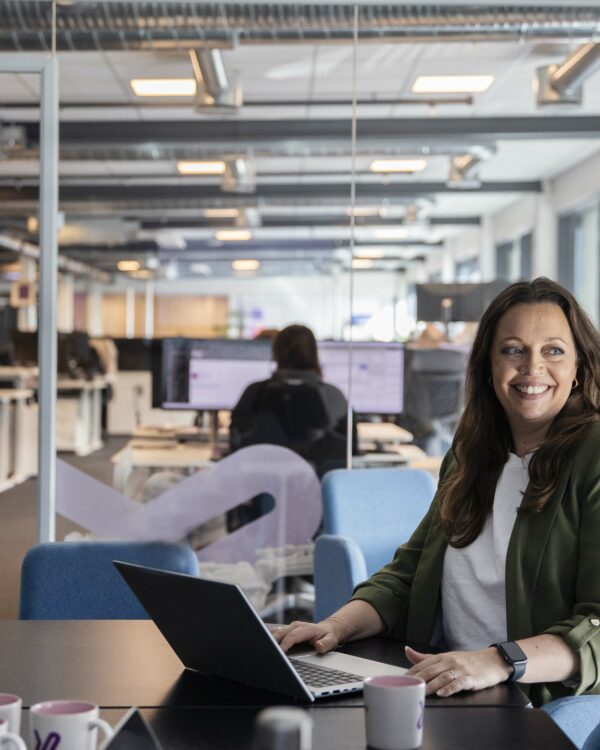That is why we help our customers move from traditional linear consumption of tech equipment to a circular and user-based model.
“Foxway Device as a Service offers our customers a complete service that simplifies and solves these challenges,” says Fredrik Spilsberg, Sales Manager at Foxway Sweden.
We manage the entire lifecycle of the devices, from purchase and financing to repair and reuse. This is done through our Foxway Digital Platform, which means the company can access both data and an increased level of control, all at one place.
Financial benefits
Our Device as a Service solution and digital platform can be integrated with customers’ systems. This means that devices are managed at one place, from ordering and service to replacing a device. It is also possible to predict how much each device costs, which gives organizations financial control.
Spilsberg also highlights another key benefit of our Device as a Service solution from a macroeconomic perspective:
“Having their devices as a subscription model also gives organizations more flexibility, compared to buying devices. With our service, companies can easily scale up and down the number of devices, thereby customize based on business needs.”

Simpler management
An extensive tech environment is another challenge that we see many organizations facing. We have processes that both structure and optimizes the tech environment through different standards.
“One of the unique features of our solution is that it doesn’t matter what kind of devices customers use or want to use. We help optimize and adapt all devices in the tech environment. Foxway also ensures that the equipment is handled responsibly, and that all data on the devices is erased upon return. This means that customers do not have to worry about data from used equipment falling into the wrong hands,” Fredrik says.
Having old devices lying around is a security risk. When we take back the devices, we erase them according to industry standards and issue an erasure certificate. We then service the devices to give them a second, and sometimes a third life.
Fredrik Spilsberg, Sales Manager at Foxway Sweden
Meet environmental requirements
From 2024, larger companies will have to report how much carbon dioxide they consume (1).
“By reusing devices, companies significantly reduce their carbon emissions as the majority of emissions occur when a device is first produced. Through our circular services, we extend the lifespan and reduce the carbon footprint generated by tech devices,” he says.
Mixing both used and new devices is a growing trend.
“The most concrete is the law introduced by France where 20% of tech equipment purchased by the public sector must be reused (2). We consider it highly likely that it is only a matter of time before more countries follows as there is a clear positive environmental impact of this initiative,” Fredrik Spilsberg concludes.
1. Direktiv om hållbarhetsrapportering (CSRD)
2. LOI n° 2020-105 du 10 février 2020 relative à la lutte contre le gaspillage et à l’économie circulaire
Enterprise Device-as-a-Service









